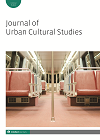
Full text loading...

This article provides a close reading of a book entitled A Little Bit of Beijing published in 2013, which has been well received by the Chinese public. The book presents detailed and meticulous architectural style diagrams, comic strips and panoramic drawings of three urban districts in Beijing. These visualizations provide evocative depictions of the buildings along with their interior spaces in these urban areas, calling for more attention to the role of ‘ordinary’ buildings of small shops in understanding these urban neighbourhoods. In this article, I analyse this book project with a focus on its visualizations through two dimensions: understanding the urban conditions that shape and are visualized by these visualizations and understanding the visualizations as a form of mapping. For the first dimension, I argue that the urban conditions underpinning, and depicted by, A Little Bit of Beijing resonate with the notion of ‘messy urbanism’. For the second dimension, I contend that A Little Bit of Beijing constitutes a form of slow mapping. Viewed from these two dimensions, these visualizations show subversive possibilities in addressing urban transformation issues in China as well as questioning the more conventional ways of mapping urban spaces.

Article metrics loading...

Full text loading...
References


Data & Media loading...

Publication Date:
https://doi.org/10.1386/jucs_00049_1 Published content will be available immediately after check-out or when it is released in case of a pre-order. Please make sure to be logged in to see all available purchase options.